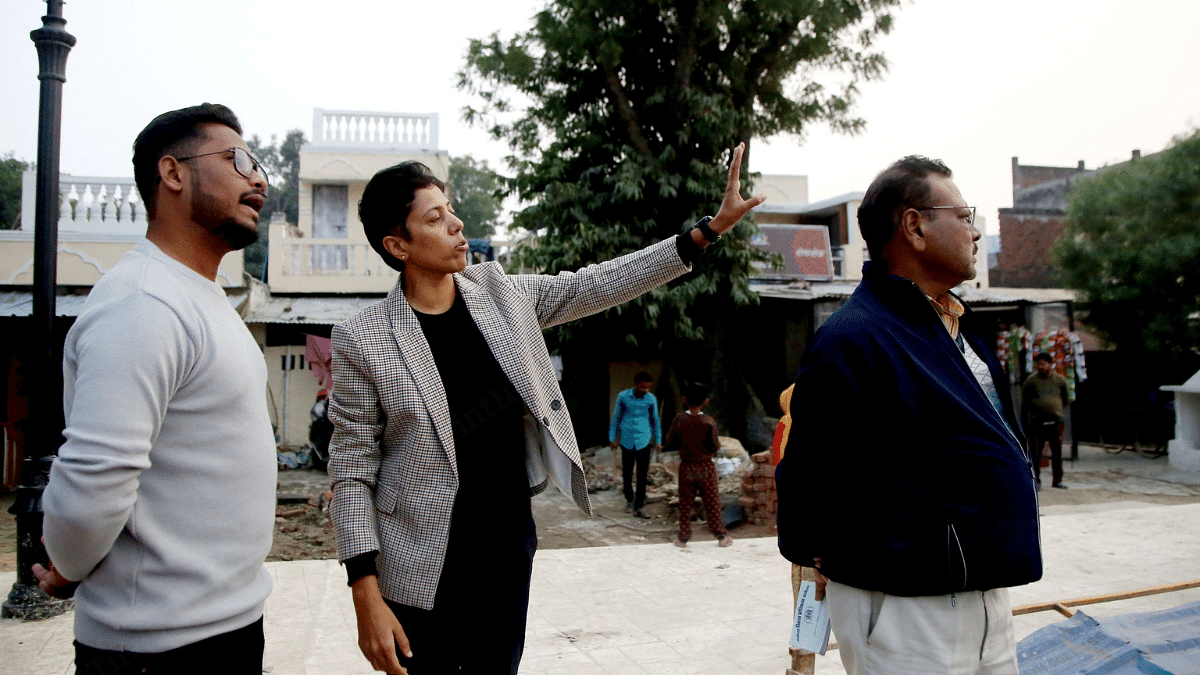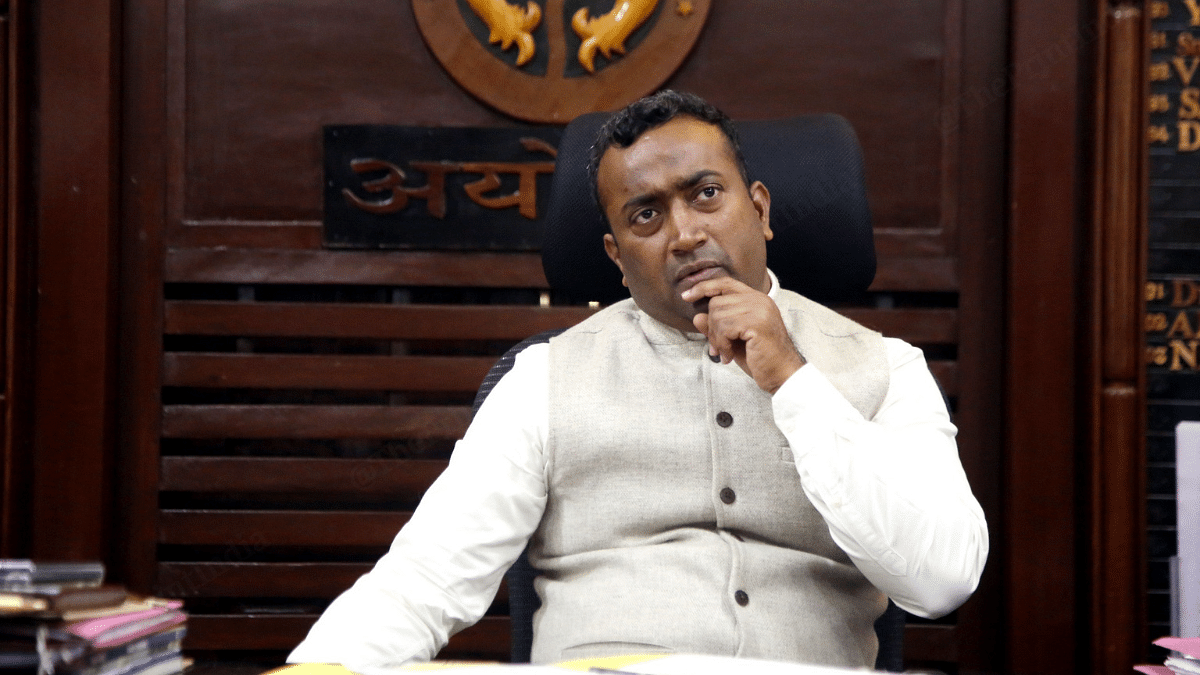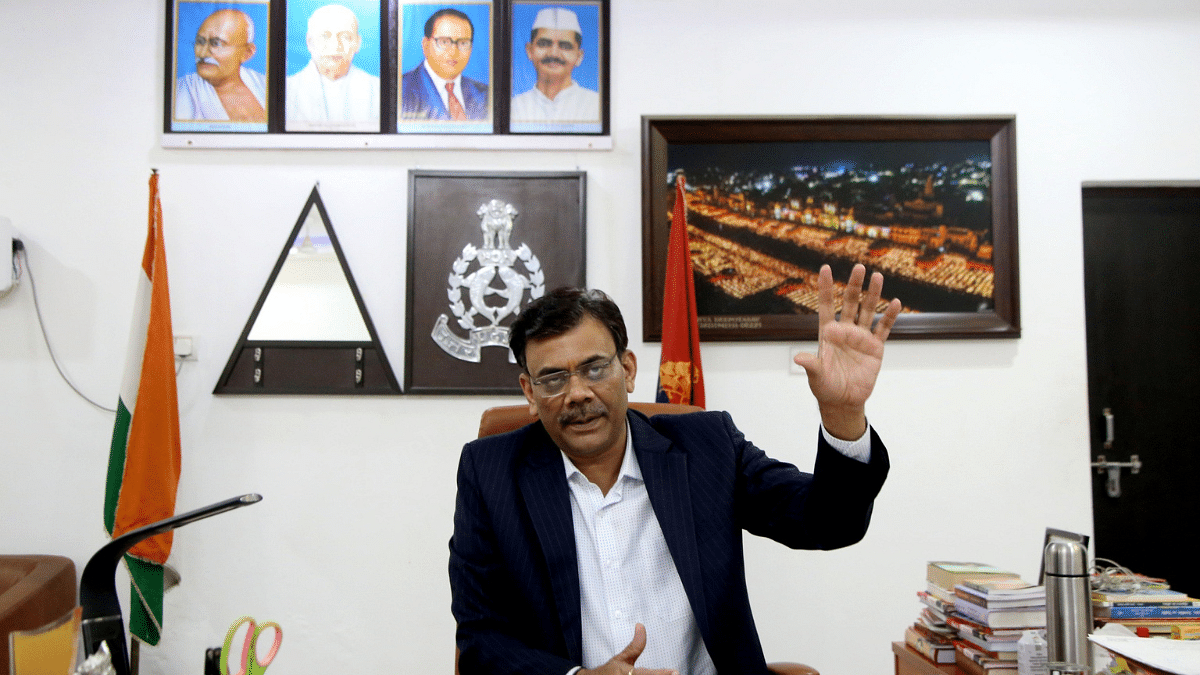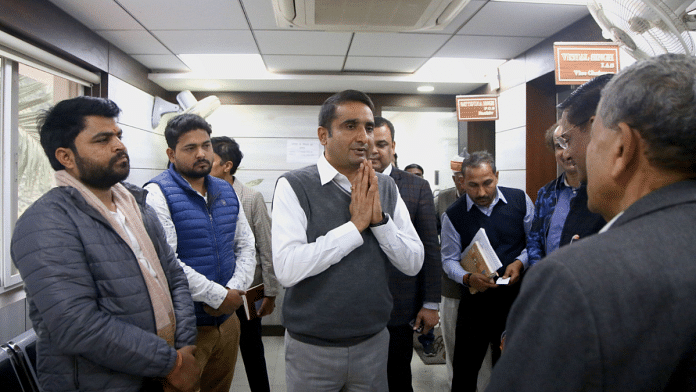Ayodhya: At the Ayodhya Development Authority’s office, IAS officer Vishal Singh juggles responsibilities in his two official capacities — vice-chairman of the ADA and municipal commissioner of Ayodhya. Singh makes a dozen trips each day to construction sites spread across the temple town, which is gearing up to host scores of VVIPs on 22 January for the consecration of an idol of the Hindu deity Ram at the newly-constructed temple.
The town is being painted in shades of saffron, major attractions are being revamped, and massive entry gates are to be installed at main roads leading to the Ram temple.
“Our vision is to turn Ayodhya into a global spiritual capital and for that, we are not only transforming the city but revamping major attractions such as Guptar Ghat, Surajkund,” Singh told ThePrint, adding that the idea is to give the local economy momentum.
“Local economy will only get a boost when the devotees come and stay for a few days.”
Earlier, Singh was serving as the secretary of Varanasi Development Authority and the CEO of Kashi Vishwanath temple. It was during his stint in Varanasi that the makeover of Kashi Vishwanath Corridor was initiated in 2019.
Prime Minister Narendra Modi had praised Singh for the makeover and he was transferred to Ayodhya soon after, said a UP government official who did not want to be named.
Singh is part of the workforce comprising city planners, administrators, architects, and others tasked with transforming the landscape of the temple town, which is central not only to the faith of billions but also lies at the core of the Bharatiya Janata Party’s ideology.
ThePrint profiles some of the other key functionaries part of project Ayodhya.
Also Read: Ram temple workers pull double shifts to meet consecration deadline — ‘it’s God’s work’
Ruchita Bansal, city planner
Ruchita Bansal’s team is the brain behind the transformation. Wearing a pair of track pants and sneakers, Bansal oversees key day-to-day affairs, from calling the shots on aesthetics, to ensuring directives are followed and drawing up plans to refurbish major attractions.
She came to Ayodhya from Noida two years ago and has since been working relentlessly to transform the temple town.

Bansal says that Ayodhya is her “dream project”.
“I had always read about transforming a city in books, but here in Ayodhya I did it from scratch,” she said, while also admitting that she misses her family and visits them once every two months.
Dikshu Kukreja, CP Kukreja Architects
The façade control and uniformisation of Ayodhya was the brainchild of Dikshu Kukreja of the New Delhi-based CP Kukreja Architects. Kukreja drew the blueprint plan for Ayodhya.
“I wanted to give a new avatar to the city without eroding its original identity. On the one side, the city was known for the Ramayana and on the other side, it was falling apart. So I wanted to bring in the historical flavour and contemporise it,” said Kukreja.
Raj Karan Nayyar, Senior Superintendent of Police
Nayyar’s daily routine involves frequent trips to the integrated traffic management control room to supervises key traffic hotspots. In case of any snarls, a message is passed on to constables on the ground to rush to the spot and do what is necessary.
While nearly a hundred traffic constables supervise traffic on Ayodhya’s roads on a day-to-day basis, this number will rise by as many as six times on the day of the consecration.
“As a temple town with a huge influx of devotees, traffic management is the need of the hour. Around 600 traffic constables will be deployed on the inauguration of the Ram temple on 22 January,” said Nayyar.
“We teach traffic constables how to behave with commuters and not get angry easily, because they work in a high-pressure environment. They are surrounded by dozens of vehicles and people throw tantrums for not letting them go,” he adds.
In addition to all of this, Nayyar is also overseeing the restructuring of the integrated traffic management system in Ayodhya. Pursuant to that, automatic number plate recognition (ANPR) cameras are being installed at major checkpoints across the temple town.
The traffic police has also partnered with satellite and mapping service providers MapmyIndia and Google Maps. “Through MapmyIndia and Google Maps, we are mapping the parking positions to give real time updates to the commuter,” said Nayyar.
Nitish Kumar, District Magistrate
Credited with the development of Bareilly domestic airport, Kumar was shifted from Bareilly to Ayodhya by the Uttar Pradesh government in October 2021 and is said to be Chief Minister Yogi Adityanath’s ‘eyes and ears’.

He recalled how the Ayodhya international airport project was not taking off, as acquisition of land was proving a hurdle.
“After I came to Ayodhya, the first thing I did was to start the process of acquisition of land. For that I had to be on the ground, make the families which were affected by the airport construction understand. It was a tough job,” the 2010-batch IAS officer said.
Vipul Varshney & Namit Aggarwal, architects
When it came to the airport and railway station, the mandate was simple: a heritage look, since both facilities would be the first stop for thousands of devotees arriving in Ayodhya each day.
Both the railway station and airport were built in Nagara style of architecture and a picture of Ram with bow and arrow on the outer walls.
The airport has been named after the sage Valmiki, who is believed to have composed the earliest version of the Ramayana. “During the construction of the airport, we were directed that the airport should have glimpses of Lord Ram’s story,” said Varshney.
Aggarwal, on the other hand, was asked to develop the Ayodhya Dham railway station as a “religious tourist destination”. Before he set out, the architect conducted a recce of Ayodhya’s religious landmarks, including Kanak Mahal and Hanuman Garhi.
Praveen Kumar, Inspector-General of Police
In 2023, Kumar was appointed the Inspector General (IG) of Ayodhya Range after his transfer from Meerut where he held the same post. Sources in the Uttar Pradesh CMO said he was brought to Ayodhya for his expertise in crowd management.
Ever since Kumar took on the role, new police stations have come up for tourist assistance, the existing ones are being bifurcated and, at times, trifurcated to ensure better management of jurisdictions.
In addition to that, the security apparatus has been ramped up to ensure that visiting devotees always have help at hand.

“We are also putting up signages, mobile flex boards at important spots and around 12 LED screens across Ayodhya that will give real-time updates to the tourists about which route to follow, which parking lot is vacant and which is the nearest police station,” said Kumar.
He added that frequent security checks are being carried out to avert any untoward activity.
“We have information on all visitors coming to Ayodhya. We have their credentials. Even a beggar is mapped in our list. Given the magnitude of this event (on 22 January), it is crucial to guarantee seamless operations. All the departments are working in tandem to make it a success,” Kumar told ThePrint.
(Edited by Tony Rai)
Also Read: Ram Aayenge is the new Ayodhya anthem. But race to sing at Ram temple opening heating up



